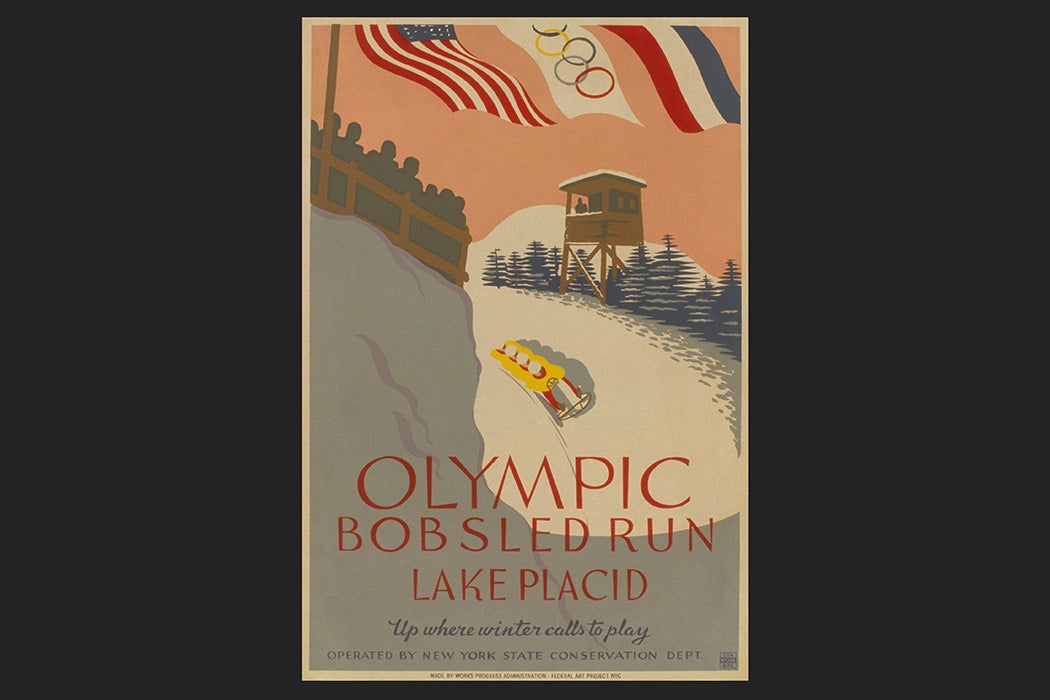The Olympic Games are rarely without controversy: boycotts of host countries, political exclusions of others, doping scandals, and poor refereeing have all occurred during the modern history of the games. The 1932 Winter Olympics were not unusual in this regard, but the specific reason was new.
Lake Placid, New York, had beaten California to host these games years before they were to be held. One major problem the site would need to overcome was the antisemitism of the Adirondack Mountains region. The first incident in this popular resort area was the Hilton-Seligman Affair in 1877, when the owner of the Grand Union Hotel had a prominent Jewish family turned away because the owner blamed “a large number of Jews” staying the previous season for the decline in his business. While the subsequent boycott of the Grand Union led to its closing, the other hotels in the area then, inexplicably, followed the Grand Union’s example.
“It set a precedent for other hostelries to discriminate at will under the guise of ‘good business,’” professor Peter Hopsicker explains, and “highlighted the budding sophistication of anti-Semitic [sic] practices in the United States.”
Nearly twenty years later, in 1895, Dr. Melvil Dewey, of the Dewey Decimal System, established the Lake Placid Club, a winter sports resort and social club. Hopsicker alleges that in wanting to protect its reputation to antisemitic people, “Dewey’s club strictly admitted no Hebrews [sic]” in the early 1900s.
Because of his exclusionary policy, a petition was drawn up and sent to the New York State Board of Regents calling for Dewey’s removal from his post as the director of the New York State Library in 1905. According to the Adirondack Daily Enterprise, Dewey had held this position since 1888. The regents did not remove Dewey, but he did resign his office.
Lake Placid Club was not the only “restricted” club in the area at the time. The Adirondack Mountain Club also made the news in the mid-1920s after some radical members sent out an unauthorized survey to members, asking if there should be a limit on the number of Jews or if Jews should be banned altogether.
By 1930, the next Winter Olympic Games were set to take place in Lake Placid, with the bobsledding venue located on Lake Placid Club’s land. David N. Mosessohn, the editor of the Jewish Tribune and executive of the Jewish National Council, wrote a letter to then-Governor Franklin D. Roosevelt in protest.
“The letter directly attacked the state’s expenditure of taxpayers’ money, including that from Jews, for the construction of facilities for the III Olympic Winter Games,” Hopsicker wrote.
Dewey, who helped had organize the upcoming games, tried to distance himself from the Lake Placid Club at the time, but this was a battle he was losing. Jewish residents of both Lake Placid and New York City, including Mosessohn, would not back down. Knowing that they may lose the bid to host the games if there was not an agreement, the State Olympic Committee invited parties involved to discuss the next course of action.
An acceptable solution was found: the Lake Placid Club land, where the bobsled run was located, would become public property.
Weekly Newsletter
“The officials of the [1932] Olympic Winter Games committee were simply trying to protect the Lake Placid community’s stake in the venture,” Hopsicker explained “With the revised [claim], Dewey assured that the land and the run would remain in the public’s hands.” (The Mt. Van Hoevenberg Olympic Bobsled Run would be used again in the 1980 Winter Olympics Games as well.)
Four years later, the American Jewish community’s protests about participation in the 1936 Olympic Games in Germany would be far less fruitful.
Editor’s Note: This story was updated to insert a missing comma and to fix a broken link.







